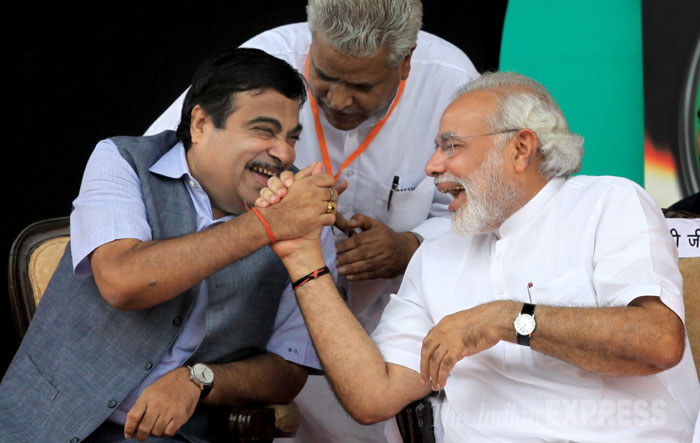Infrastructure has been a priority for the NDA government in the last four years. It has made a significant investment in public transport, highway construction, railways, water transport, and air connectivity. The large public investment in infrastructure was supported by oil bonanza which government got in its initial years due to the slump in crude prices. There has been very low investment in the road construction sector by the UPA government because various welfare programmes like MGNREGA had constrained the government from financing infrastructure building. The last big push in road development was in NDA-1 government led by former Prime Minister Atal Bihari Vajpayee. The two big infrastructure projects- Golden Quadrilateral Network and Pradhan Mantri Gram Sadak Yojna (PMGSY) were started during this time.
Moreover, NDA-2 also prioritised the infrastructure spending like the NDA-1. The rate of highway construction touched almost 24 km per day in the period between April to November this year, as against 20.5 km per day in the same period last year. The road construction is expected to pick up further as the last quarter of fiscal year generally witnesses relatively higher construction rate in comparison to rest of the year. Modi government has been beating its own record every time as the road construction has grown exponentially every year. In the last year of UPA government, road construction was 11.7 km per day and it increased to 12 in FY 15, 16.6 in FY 16, 22.6 in FY 17, 26.9 in FY 18 and expected to cross 30 km per day in the current fiscal year. The UPA II built 24,605 km in five years which Modi government surpassed in just three and a half year.
The construction activity is expected to grow very fast in the upcoming years as NBFC liquidity crisis is getting solved due to the continuous efforts of the Modi government. NBFCs were the major source of loan for private construction companies. So, private construction will grow and the government will need to make a lesser investment in the sector.
The construction activity spurred after by Transport Minister Nitin Gadkari brought an innovative solution to the problems which hampered the growth during the UPA era. A large number of stalled projects had been blocking infrastructure projects and at the same time adding to NPAs of the banking system. To overcome this problem, the Modi government brought the hybrid annuity model (HAM) in 2015. Under the HAM, the government will pay 40% of the project cost to the developer in the first five years through annual payments (annuity). The remaining payment will be made on the basis of the assets created and the performance of the developer. In this model, there will be a toll right for the developer, while revenue collection would be the responsibility of the NHAI. The advantage of HAM is that it provides money to the developer in order to start the project while the financial risk is shared between both.
The pickup in NHAI’s pace of construction is mainly due to the new hybrid annuity model (HAM). Earlier, there were two main models of highways construction in India- the Engineering, Procurement and Construction (EPC) Model and Public-Private Partnership (PPP) model. In the EPC model, the government bears almost all the costs of the project and is responsible for operations and implementation. The difficulty of this model is the high financial burden on the government. On the other hand, in the PPP model, a road developer constructs the road and is allowed to recover investment through toll collection. In the PPP model, the developers hardly ever delivered on time. However, due to the HAM model, the midsized companies which got most of the contracts saw their order books expanding three to four times of revenues. There are also concerns over the timely execution of the awarded projects. So, the government is expected to shift back to the EPC model where government bears most of the project costs and is responsible for operations and implementation despite the financial burden involved in it.
